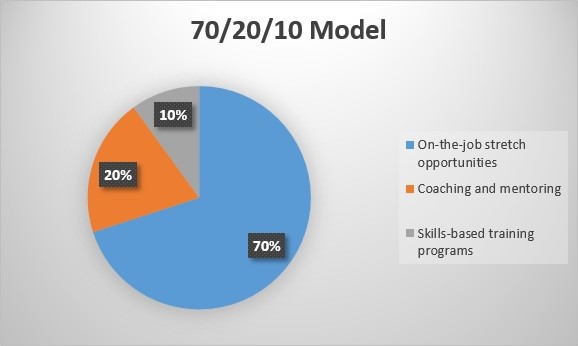
 Special to the Philanthropy Journal
Special to the Philanthropy Journal
By Jill Orr and Darien Skinner
As a land-grant university, NC State is committed to providing students hands-on, highly-engaged learning opportunities AND to providing research that is of direct, practical use to the fields we work in. Philanthropy Journal proudly presents this series of evidence-based resource articles developed by Dr. Amanda J. Stewart‘s masters level Management of Nonprofit Organizations class. These articles represent a perfect overlap of engaged learning and practical research.
Nonprofit journals and magazines have been forecasting and closely monitoring changes in sector leadership over the past 15 years. At first, the focus was on nonprofit leadership deficits, but the rhetoric has shifted to a lack of adequate investments in talent development of future leaders and professionals.
The 2011 “Daring to Lead” Report found that more than half of executives surveyed described their nonprofit as underperforming in terms of staff development, stating that their organization had insufficient talent management processes and had not made employee development a strategic priority.[1] Research shows that even large nonprofits fail to provide adequate leadership development or recruit from within, even with the organizational structure and financial resources to provide upward mobility.[3]
Nonprofit leaders frequently cite industry-specific workshops and conferences as their primary professional development tool. Unfortunately, these development opportunities have a limited effect on learning, due to their short time periods and the lack of integration into on-the-job development plans.[4] Additionally, smaller organizations may not be able to consistently cover the fees associated with formal training.
Fortunately, there is a silver lining. If leaders are willing, nonprofits can create free or low-cost talent development solutions internally that will have lasting effects on the employee and the organization.
Leadership Development: Perspectives of Current Executives
 Charles Phaneuf, Executive Director of Raleigh Little Theatre, and Kathryn Wyatt, Co-Founder of Kidznotes and Executive Director of El Sistema USA, are two energetic nonprofit leaders within the arts and culture sector. They recently took time to share their backgrounds and personal career paths, as well as their approaches to developing and empowering their staff. Entering their current roles earlier in their careers and at a younger age than the average executive,[2] these leaders have a recent perspective of the path to executive leadership in nonprofit organizations and a contemporary viewpoint on developing their staff. Their discussion of development tools and insights has been summarized in the context of the Center for Creative Leadership’s (“CCL”) 70/20/10 model for effective leadership development.
Charles Phaneuf, Executive Director of Raleigh Little Theatre, and Kathryn Wyatt, Co-Founder of Kidznotes and Executive Director of El Sistema USA, are two energetic nonprofit leaders within the arts and culture sector. They recently took time to share their backgrounds and personal career paths, as well as their approaches to developing and empowering their staff. Entering their current roles earlier in their careers and at a younger age than the average executive,[2] these leaders have a recent perspective of the path to executive leadership in nonprofit organizations and a contemporary viewpoint on developing their staff. Their discussion of development tools and insights has been summarized in the context of the Center for Creative Leadership’s (“CCL”) 70/20/10 model for effective leadership development.
The CCL’s 70/20/10 model states that 70% of leadership development for an employee should come from on-the-job stretch opportunities; 20% from coaching and mentoring by organizational leaders; and the remaining 10%, from skills-based training programs.[3] The model is valued because of its heavy emphasis on on-the-job skill-building and mentoring. These tools require limited financial resources or staff time spent out of the office. Additionally, the model provides a framework for leaders to work from while developing plans to integrate staff development into strategic plans and annual goals.

Figure 1. The Center for Creative Leadership’s 70/20/10 model of leadership development [Click to enlarge]
On-the-job stretch opportunities: Wyatt creates stretch opportunities for her employees by allowing them to take on projects outside of their experience and current scope and setting the bar very high. “My style has always been to challenge people to do more than they think they can,” she shared, “and then support them in their success.” Wyatt experienced this as a young professional, as leaders expected more of her than she thought she could achieve. The formal structure of an organization can also affect the growth opportunities that exist internally. Both Phaneuf and Wyatt participated in the restructuring of their nonprofits, to provide more opportunities for the reorganization of responsibilities and leadership roles. At Kidznotes, a layer of management was added, in part, to provide musician-teachers the opportunity to move up into management roles.
Coaching and mentoring: Wyatt and Phaneuf both attribute coaching and mentoring to their leadership successes. While surrounding themselves with “experts,” they learned the value of networking and learning from peers and senior leaders. Another key to their professional development was being guided by their self-awareness; coaching experiences helped them identify their strengths and weaknesses, passions, motivations, and skills gaps. Lastly, engaging with the community has been another major, contributing step for them. For Wyatt and Phaneuf, this includes mentoring and being available for informational interviews by young professionals, being “enrolling” (i.e. drawing others to the cause through their personal passion and energy) with the community, connecting individuals, and nonprofit volunteering and board service.
Formal training: Both Phaneuf and Wyatt participated in management-focused fellowships that they cite as valuable steps in their leadership development. Phaneuf completed the Future Executive Directors Fellowship and participated in Leadership Raleigh. Wyatt completed two management fellowships through the League of American Orchestras and TED via the New England Conservatory. Phaneuf was also able to participate in the Grinnell Leadership Program, which focuses on 360 evaluations (an assessment tool that gathers feedback from supervisors, peers, and employees) and becoming self-aware of skills and abilities such as adaptability. Phaneuf thinks there is value in establishing a line item in a nonprofit’s budget for the costs associated with formal staff trainings such as conferences and workshops to prepare for these expenses.
Nonprofit Development Strategies and Accountability
All components of an effective leadership development plan should be coordinated so that they build on one another. The Bridgespan Group – a global nonprofit organization that provides consulting, leadership development, and exchange-of-industry best practices – summarized the essential components of a successful talent development strategy as:
- Committed leaders who are held accountable for mentoring and developing staff.
- Discovery of leadership development activities that align to the nonprofit’s goals and the needs of the individual employee.
- Individual plans for staff members that are collaboratively created and that clearly define goals, skill gaps, mentoring relationships, and formal training opportunities to supplement on-the-job development.
- Systems to evaluate the implementation of talent development plans such as links to performance evaluations and strategic plans.[3]
Employees have an obligation to help craft and pursue development opportunities, both inside and outside the organization. Phaneuf encourages young professionals to take opportunities to lead, such as serving on a board or chairing a committee: “The more reps you get in, the better.” And as Bridgespan points out in their recommendations, strategic plans for individual growth should be co-created. Conversations between the employee and manager can help hone in on goals and activities that align with individual and organizational goals. Phaneuf reinforced this notion by saying that he believes in “shared responsibility and a collaborative approach to designing development plans that fit the staff.”
Benefits of Investing in Development
Investing in professional development creates a more adaptive and progressive environment which increases workplace morale and decreases employee turnover. Supporting development allows leaders to recognize performance,[5] provide growth opportunities, and prime employees for promotions, which can help compensate the below-market salaries that are prevalent in nonprofits. For employees, this support and a collaborative effort to invest in them, increases job satisfaction and motivation, builds confidence, and influences participation and teamwork.
Ultimately, supporting and investing in leadership development in the nonprofit sector can provide employees with essential tools and soft skills for potential succession into leadership. This helps future leaders and their organizations grow, and reduces the sector-wide deficit. Making staff development a formalized and stated priority can remove uncertainty and help ensure that there are exceptional future leaders ready to take on executive positions, saving nonprofits recruitment and training costs and providing better continuity of services for those that the nonprofit serves.
[1] Cornelius, M., Moyers, R. & Bell, J. (2011). “Daring to Lead.” Compass Point Nonprofit Services and the Meyer Foundation.
[2] Stewart, A. J. & Kuenzi, K. (2016). “Exploring Career Paths of Nonprofit Executives.”
[3] Landles-Cobb, L., Kramer, Kirk, & Milway, K. S. (2015). “The Nonprofit Leadership Development Deficit.” Stanford Social Innovation Review: Informing and inspiring leaders of social change.
[4] Santora, J. C., Sarros, J. C., & Esposito, M. (2010). “Small to mid‐sized nonprofit leadership development initiatives: organizational lessons learned.” Development and Learning in Organizations: An International Journal, 24(6), 17-19.
[5] Stahl, R. M. (2013). “Talent Philanthropy: Investing in Nonprofit People to Advance Nonprofit Performance.” The Foundation Review, 5(3), 35-38.
Jill Orr is the Director of Development for Arts NC State, the collective of North Carolina State University’s six visual and performing arts programs. Additionally, she is a graduate student in the Masters of Public Administration program at North Carolina State University.
Darien Skinner is a graduate student in the Nonprofit Management Certificate Program at North Carolina State University. She has interest in becoming a future leader within the nonprofit sector.





